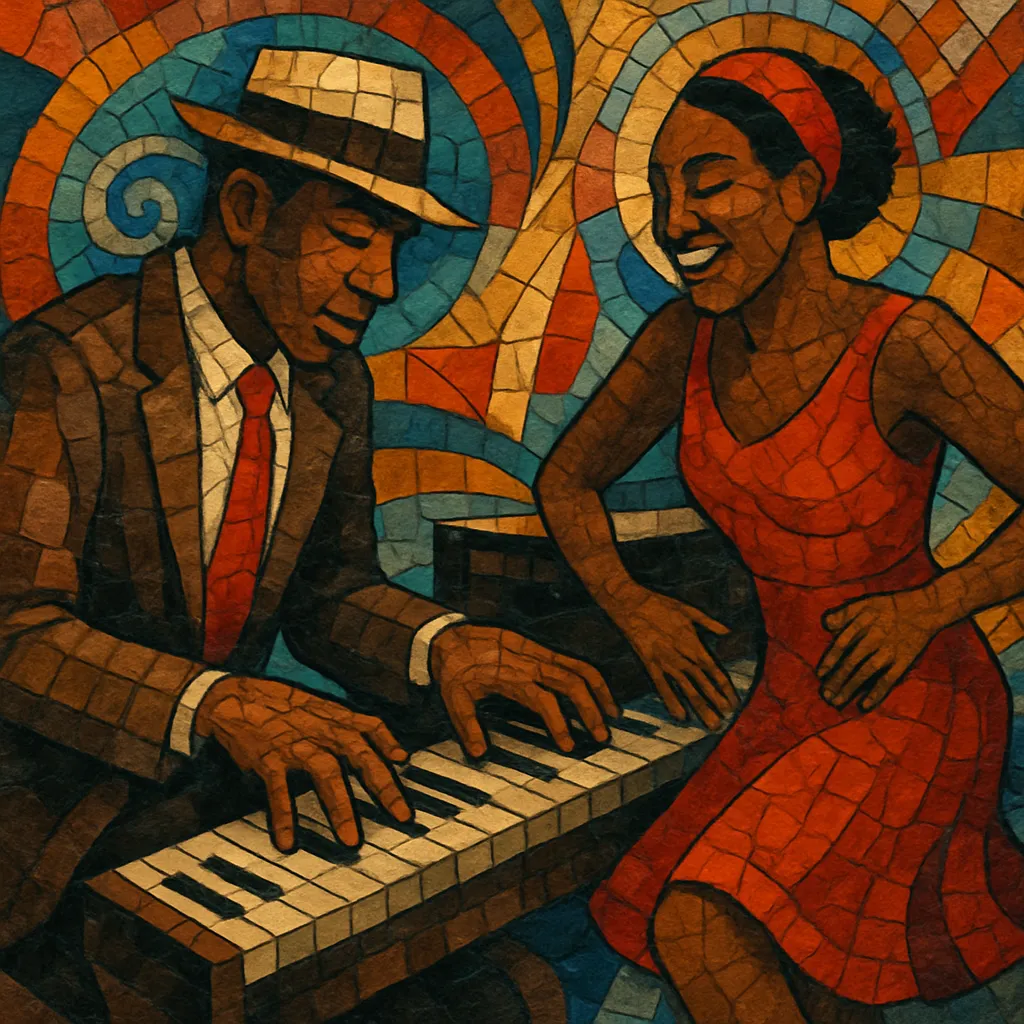
Boogie-woogie is a high-energy, piano-driven style of blues distinguished by a propulsive left-hand ostinato and a riff-based, improvisatory right hand.
It emphasizes an “eight-to-the-bar” feel (a steady stream of swung eighth notes), strong backbeat accents, and infectious walking bass figures. While it originated as a solo piano idiom played in barrelhouses and rent parties, its vocabulary was quickly adapted by small combos and big bands, helping to ignite mid-century rhythm and blues and, eventually, rock and roll.
Boogie-woogie emerged in the 1910s within African American communities of the American South and Southwest—especially Texas, Louisiana, and Arkansas—where pianists entertained in lumber and railroad camps, juke joints, and barrelhouses. Drawing on blues harmony, ragtime syncopation, and work-song rhythmic sensibilities, pianists forged a distinctive left-hand “walking” pattern that suggested a steam-train’s momentum. Early practitioners included Jimmy Yancey, Cow Cow Davenport, and Hersal Thomas, who helped codify the percussive touch and rolling bass lines.
In 1928, Clarence “Pine Top” Smith’s “Pine Top’s Boogie Woogie” popularized both the sound and the name, featuring characteristic right‑hand riffs and spoken dance calls. Around the same time, Meade “Lux” Lewis recorded “Honky Tonk Train Blues” (first cut in 1927, widely reissued in 1937), which became an archetypal boogie-woogie showpiece.
The style exploded nationally after John Hammond’s 1938 “From Spirituals to Swing” concert at Carnegie Hall, showcasing the trio of Meade “Lux” Lewis, Albert Ammons, and Pete Johnson. Their collaborations—often with vocalist Big Joe Turner—helped spread boogie-woogie beyond solo piano into small-group and big-band contexts. Swing bands (e.g., Tommy Dorsey, Count Basie, and Glenn Miller) incorporated boogie-woogie bass figures and shout choruses, fueling a late‑1930s and 1940s craze.
As jump blues, R&B, and rock and roll took center stage, boogie-woogie’s rhythmic DNA lived on in backbeat-oriented popular music. Pianists like Amos Milburn bridged classic boogie with postwar R&B, while later rock and roll players (and countless guitarists adapting the left-hand pattern on the low strings) carried the idiom forward. Today, boogie-woogie remains a cornerstone of blues piano pedagogy, festival culture, and stylistic crossover, prized for its drive, virtuosity, and crowd-pleasing swing.
Aim for an energetic, swinging pulse with an “eight‑to‑the‑bar” left hand. Typical tempos range from medium (120–150 BPM) to fast (160–210 BPM). Keep the groove unwavering and slightly behind the beat for a heavy, rolling feel.
Use a 12‑bar blues in I–IV–V with dominant 7th chords (e.g., in C: C7–F7–G7). Common layout:
• Bars 1–4: I7 • Bars 5–6: IV7 • Bars 7–8: I7 • Bar 9: V7 • Bar 10: IV7 • Bars 11–12: I7 (turnaround to V7)Add quick IV (bar 2), secondary dominants, tritone subs, and classic boogie turnarounds for variety.

